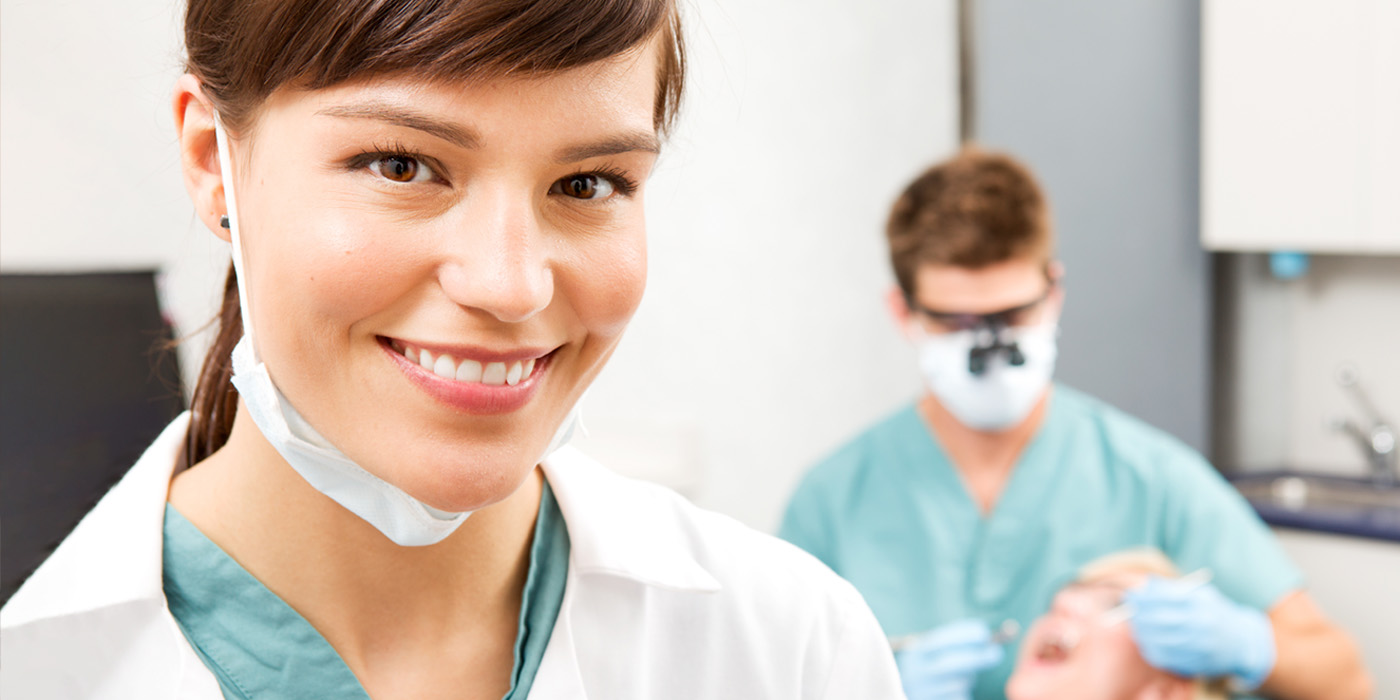Clinical Dental Assistant (Voucher Included) – (VIRTUAL) – Course #118147.900
$2,995.00
| Start Date | Rolling Enrollment |
|---|---|
| Days | Self Paced Learning |
| Total Hours | 300 |
| Duration of Program Access | 12 Months |
Course Description
Prepare for the Certified Dental Assistant (CDA) Exam Online
Dental assistants play a valuable role in any dental care team, often handling a variety of tasks from assisting with treatment procedures to administrative duties. This 100% online course will help you gain the technical skills you need to join a dental office as a clinical dental assistant. Upon successful completion of this course, you will receive vouchers to sit for the Anatomy, Morphology, and Physiology (AMP), Infection Control (ICE), and Radiation Health and Safety (RHS) portions of the Dental Assisting National Board examinations.
Job Outlook for Clinical Dental Assistants
According to the Bureau of Labor Statistics, the average salary of a clinical dental assistant is currently just over $40,000 per year.
Employment is projected to grow by 11% through 2030, which is considered much faster than average. Ongoing research linking good dental health with good overall health is driving this growth as demand for preventative services continues to increase
Clinical Dental Assistant FAQs
WHAT DOES A CLINICAL DENTAL ASSISTANT DO?
Clinical dental assistant jobs vary based on the dental office and the state your work in. Typical duties include preparing patients for treatment, sterilizing tools, instructing on proper dental hygiene, passing instruments to the dentist during procedures, keeping records of treatments, scheduling appointments and processing x-rays.
HOW LONG WILL IT TAKE TO BECOME A CLINICAL DENTAL ASSISTANT?
Most clinical dental assistant training programs can be completed in one year or less. This does not include the time you will spend working in an externship or similar position to gain experience in the field. It also does not include the required two years of work experience you will need to become certified.
WHAT ARE THE REQUIREMENTS TO BECOME A CERTIFIED DENTAL ASSISTANT?
To become a Certified Dental Assistant, you will need to pass the three components of the Dental Assisting National Board (DANB) Certification Exam and meet the Board’s work experience requirements. You will need to pass the Radiation Health and Safety, Infection Control, and General Chairside components of the DANB Certification Exam as well as complete at least two years of work experience (or a minimum of 3,500 hours accrued over a two to four year period).
WHAT KIND OF HOURS DO CLINICAL DENTAL ASSISTANTS WORK?
Most dental assistants work a full-time schedule of 40 hours per week, however, there are some dental assistants that work part-time. Many of the hours will be worked during the day, but depending on your dental office, you may be asked to work some evenings or weekends.
WHERE DO CLINICAL DENTAL ASSISTANTS WORK?
Almost all clinical dental assistants work in dental offices under the supervision of dentists, though some may find employment with the government or in physicians’ offices. Dental assistants work very closely with dental hygienists. In this position, you will be on your feet for large portions of the day and wear surgical masks, safety goggles, gloves, and protective clothing to prevent the spread of infectious diseases.
WHAT IS THE DIFFERENCE BETWEEN A CLINICAL AND ADMINISTRATIVE DENTAL ASSISTANT?
While both roles are important components of the dental staff, an administrative dental assistant focuses more on the office's administrative tasks, such as greeting patients, collecting patient information, filling out medical forms, organizing office records, and other clerical tasks. On the other hand, a clinical dental assistant helps dentists and dental hygienists with treatment procedures, sterilization and disinfection of dental tools, patient charting, taking vital signs, processing quality radiographs (x-rays), and more.
Course Objectives
- Real-world perspectives from experienced dental assistants
- Essential information about anatomy and physiology, preventive dentistry, patient care, and communication, radiology, pharmacology, anesthesia, assisting in specialty practices, employment strategies, and much more
- Explore the basics of maintaining computerized clinical dental records using Dentrix Practice Management software
Prerequisites and Requirements
There are no prerequisites to complete this course. However, candidates must have a high school diploma or equivalent to sit for national certification exams.
Registration and Enrollment
This course is 100% online. Start anytime.
Curriculum
I. The Dental Profession
II. Communication Skills
III. Ethics for the Dental Assistant
IV. Basic Dental Sciences
V. Dental Anatomy
VI. Oral Pathology
VII. Infection Control
VIII. Hazardous Materials
IX. Caring for Exceptional Patients
X. Pharmacology for the Dental Assistant
XI. Emergency Management
XII. Oral Health and Nutrition
XIII. The Dental Office
XIV. Dental Instruments
XV. Introduction to Chairside Assisting
XVI. New Patients and Charting
XVII. Introduction to Dentrix Learning Software (Optional)
XVIII. Anesthesia and Sedation
XIX. Preventative Care
XX. Radiation Health Safety
XXI. Extraoral and Digital Radiology
XXII. Dental Emergency Procedures and Amalgam Restorations
XXIII. Composite Procedures and Laboratory Materials
XXIV. Pediatric Dentistry and Orthodontics
XXV. Dental Specialties
XXVI. Dental Implants and Fixed Prosthetics
XXVII. Computerized Restorative Systems and Removable Prosthodontics
XXVIII. Cosmetic Dentistry
XXIX. Dental Practice Management
XXX. Your Dental Career
Instructor
Cindy Lamkin
Cindy Lamkin has been employed in the dental field for over 20 years. She graduated from the University of South Dakota with a degree in dental hygiene and holds Registered Dental Assistant and Registered Dental Hygienist credentials. In addition to practicing clinical hygiene, she has also worked in dental office administration and treatment coordination. Her career includes general dentistry, as well as specialty practices of periodontics, endodontics, pedodontics, and orthodontics.

